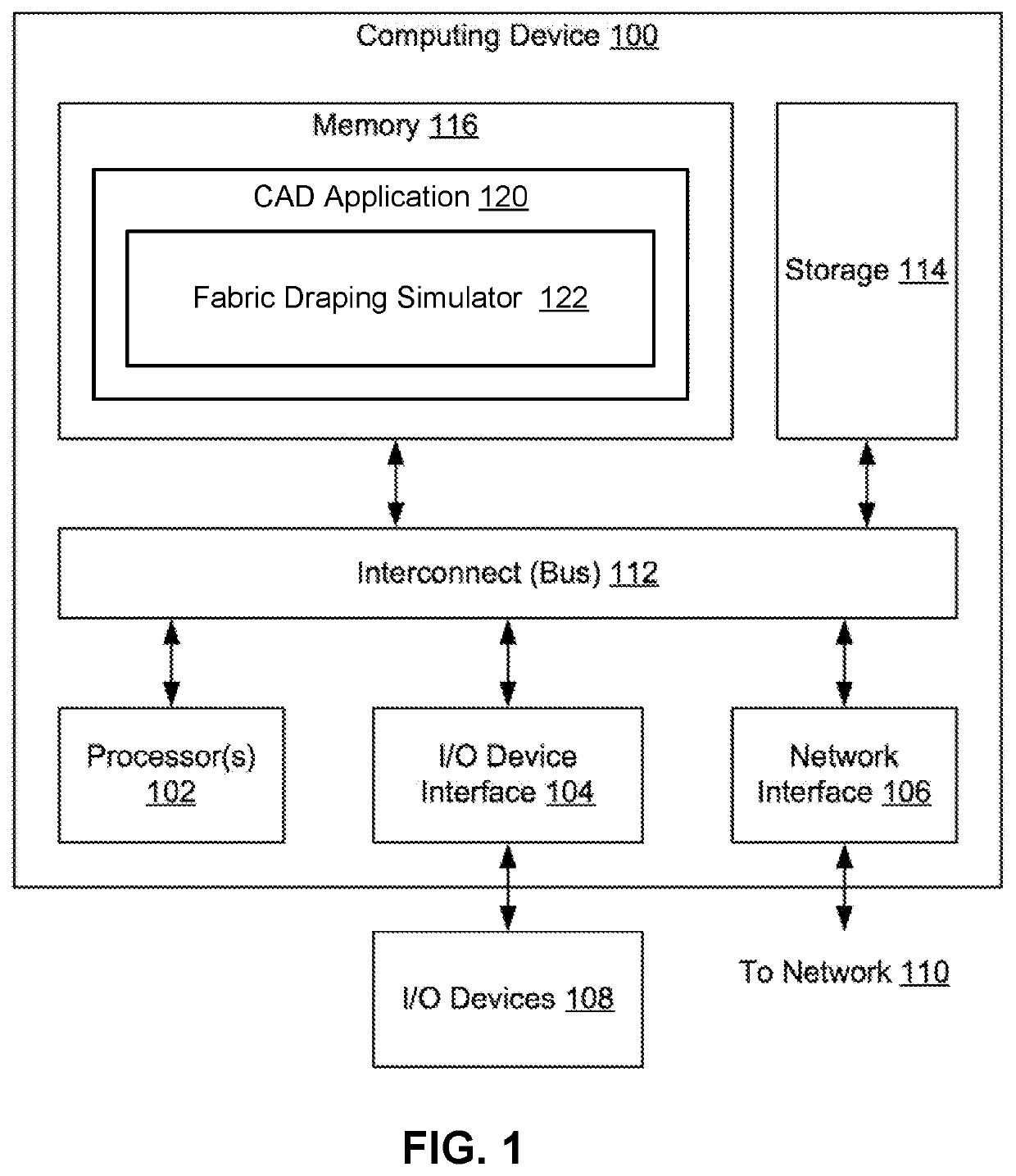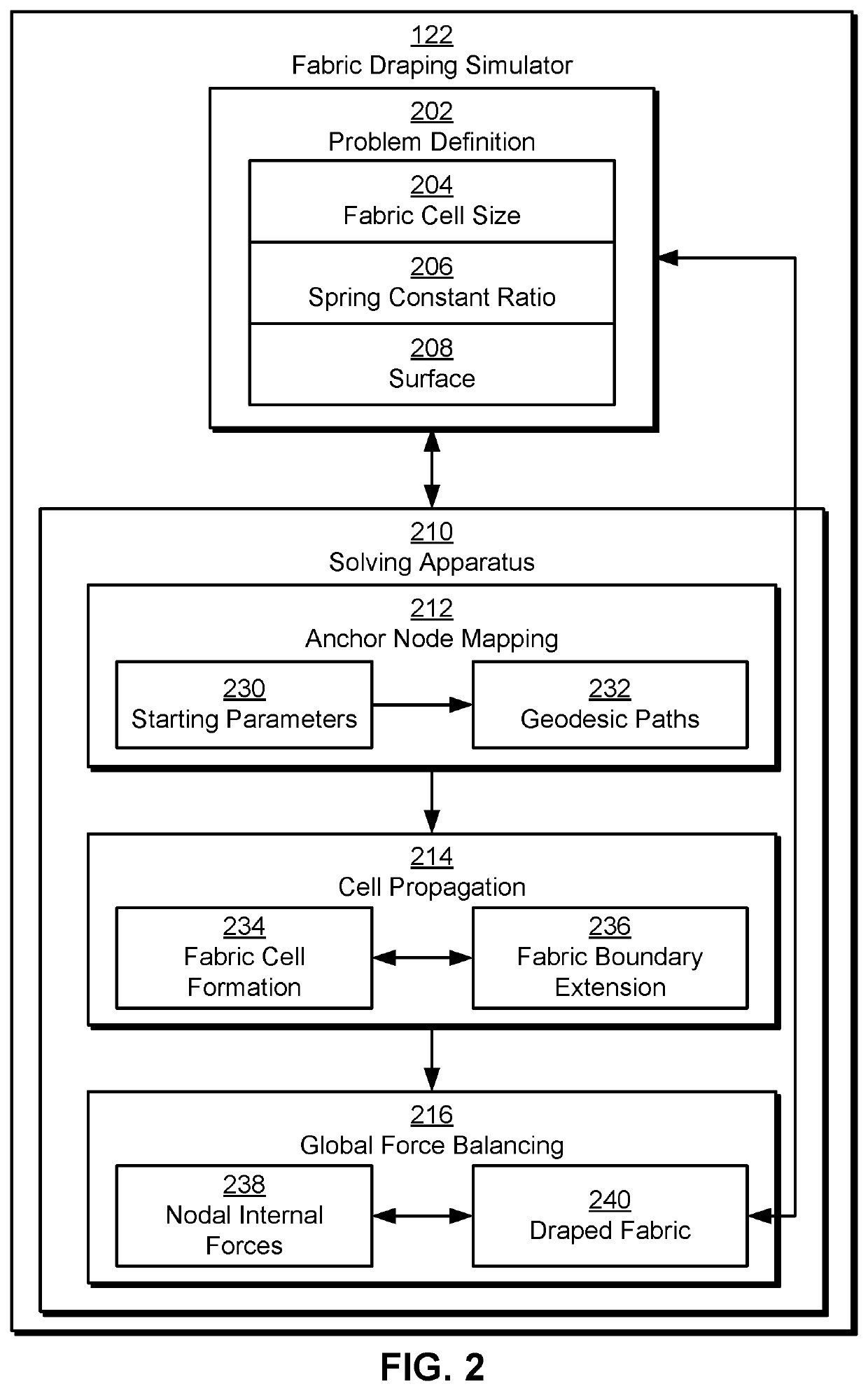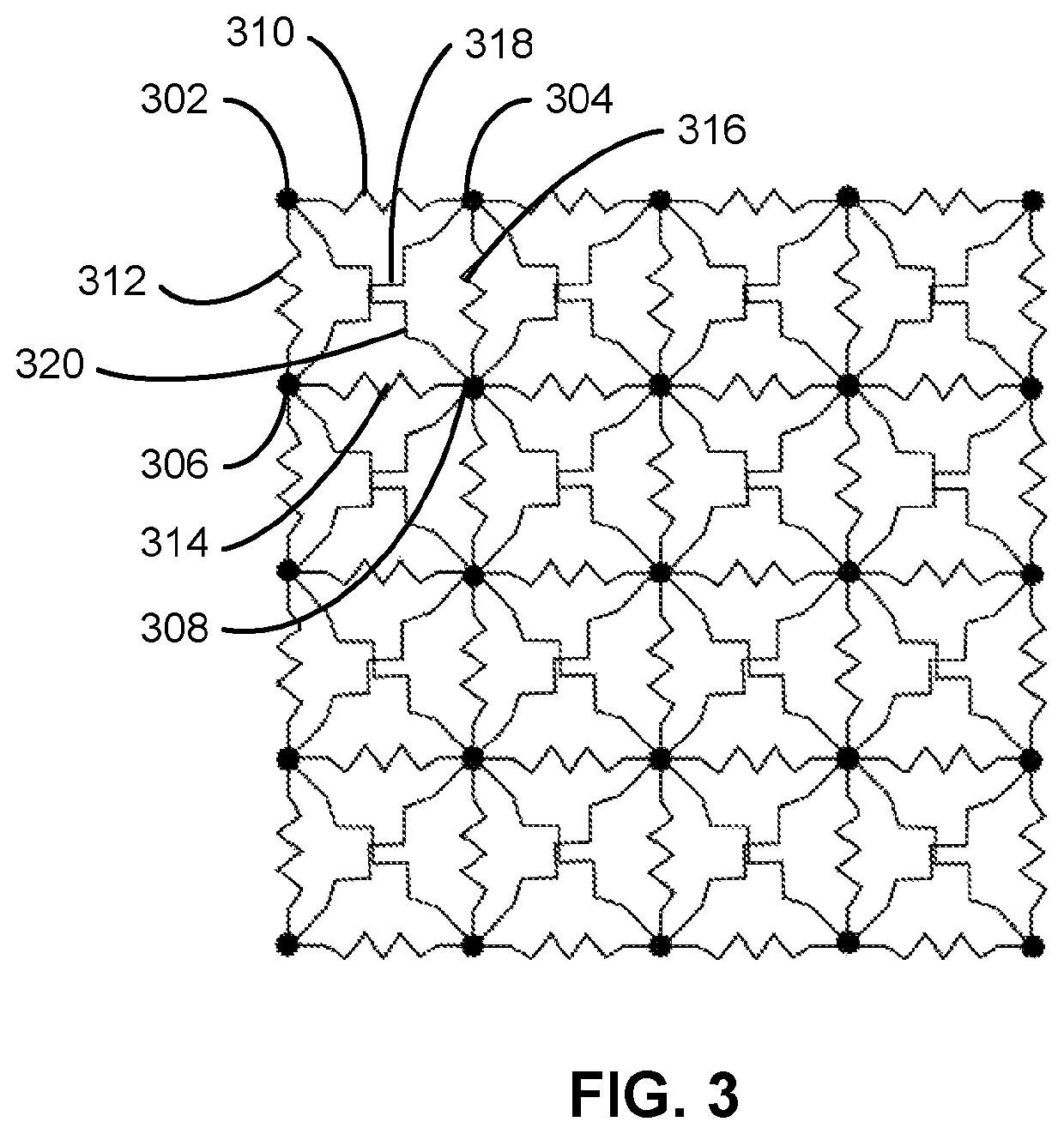Hybrid structural-geometric technique for performing draping simulation of woven fabric composites
a technology of woven fabric and hybrid structure, applied in the field of computer-aided design, can solve the problems of large computational overhead, high cost of composite materials, and high cost of composite materials, and achieve the effects of significant computational overhead, hybrid approach, and simple representation
- Summary
- Abstract
- Description
- Claims
- Application Information
AI Technical Summary
Benefits of technology
Problems solved by technology
Method used
Image
Examples
Embodiment Construction
[0017]In the following description, numerous specific details are set forth to provide a more thorough understanding of the various embodiments. However, it will be apparent to one of skilled in the art that the inventive concepts may be practiced without one or more of these specific details.
System Overview
[0018]FIG. 1 illustrates a computing device 100 configured to implement one or more aspects of the present invention. Computing device 100 may be a desktop computer, a laptop computer, a smart phone, a personal digital assistant (PDA), tablet computer, or any other type of computing device configured to receive input, process data, and optionally display images, and is suitable for practicing one or more embodiments of the present invention. Computing device 100 is configured to run productive congestion application 150 that resides in a memory 116. In some embodiments, computing device 100 is also configured to run space design application 118. It is noted that the computing dev...
PUM
| Property | Measurement | Unit |
|---|---|---|
| fabric cell size | aaaaa | aaaaa |
| cell size | aaaaa | aaaaa |
| resistance | aaaaa | aaaaa |
Abstract
Description
Claims
Application Information
 Login to View More
Login to View More - R&D
- Intellectual Property
- Life Sciences
- Materials
- Tech Scout
- Unparalleled Data Quality
- Higher Quality Content
- 60% Fewer Hallucinations
Browse by: Latest US Patents, China's latest patents, Technical Efficacy Thesaurus, Application Domain, Technology Topic, Popular Technical Reports.
© 2025 PatSnap. All rights reserved.Legal|Privacy policy|Modern Slavery Act Transparency Statement|Sitemap|About US| Contact US: help@patsnap.com



